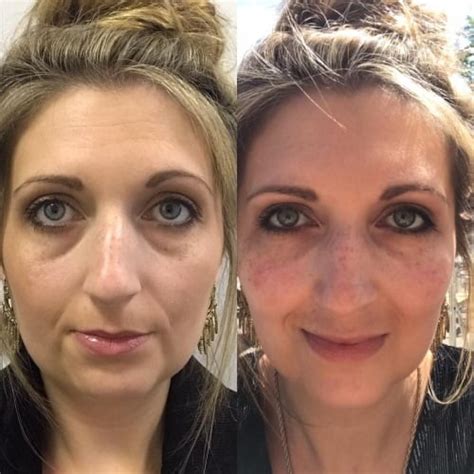The Perfect Age for a Subtle Filler Enhancement: A Guide to Natural-Looking Results
The pursuit of youthful radiance is timeless, and subtle filler enhancements have become a popular choice for those seeking to gently restore volume and address the signs of aging. But when is the right time to consider this minimally invasive procedure? There's no single "perfect" age, as individual needs and aging processes vary greatly. However, understanding the typical timeline of facial changes and the benefits of early intervention can help you make an informed decision.
What are Dermal Fillers?
Before diving into the ideal age, let's clarify what dermal fillers are. These are injectable gels, primarily composed of hyaluronic acid (a naturally occurring substance in the body), that add volume to the face. They can be used to address various concerns, including:
- Nasolabial folds (smile lines): Deepening lines that run from the nose to the corners of the mouth.
- Marionette lines (mouth corners): Lines that extend downwards from the corners of the mouth.
- Cheek volume loss: A reduction in cheek fullness that contributes to a gaunt or aged appearance.
- Lip augmentation: Enhancing lip volume and definition.
- Temple hollowing: Addressing the loss of volume in the temples.
Is There a "Perfect" Age for Filler Treatment?
The truth is, there's no magic number. The ideal time for filler treatment depends on individual factors like genetics, lifestyle, sun exposure, and the degree of volume loss you wish to address. However, many experts suggest that the late 20s and 30s represent a sweet spot for preventative or early intervention.
Why Start Earlier?
Starting earlier offers several advantages:
- Preventative measures: Addressing early signs of aging before they become deeply etched can help maintain a more youthful appearance for longer. Think of it as preventative maintenance, similar to skincare routines.
- Subtle enhancements: Early intervention often requires less filler to achieve desirable results, leading to a more natural look. Smaller amounts of filler are easier to manage and less likely to cause complications.
- Gradual rejuvenation: Starting early allows for a gradual approach, preventing dramatic changes and enabling easier adjustments over time.
What About Older Adults? Are Fillers Still Suitable?
Absolutely! Dermal fillers are highly effective for individuals in their 40s, 50s, 60s, and beyond. For older adults, fillers can help:
- Restore lost volume: Effectively address significant volume loss in the cheeks, temples, and lips.
- Improve skin texture: Fillers can help plump the skin, reducing the appearance of wrinkles and fine lines.
- Enhance facial symmetry: Correct asymmetries caused by aging or previous injury.
When Should You Not Consider Fillers?
While fillers are generally safe, there are some instances where they might not be suitable:
- Pregnant or breastfeeding: It's generally recommended to avoid fillers during pregnancy and breastfeeding.
- Active skin conditions: Existing skin infections or conditions like acne can complicate the procedure.
- Bleeding disorders: Individuals with bleeding disorders may be at increased risk of complications.
- Unrealistic expectations: It's crucial to have realistic expectations about the results of filler treatment. A consultation with a qualified practitioner is essential to discuss your goals and assess suitability.
How to Find a Qualified Practitioner
Choosing the right practitioner is paramount. Always consult a board-certified dermatologist, plastic surgeon, or other qualified medical professional experienced in administering fillers. They can assess your individual needs, recommend the appropriate filler type and amount, and discuss potential risks and benefits.
Frequently Asked Questions (PAA)
Q: At what age do most people start getting fillers?
A: There's no set age. Many individuals begin in their late 20s or 30s for preventative purposes, while others wait until more noticeable signs of aging appear. The ideal time depends on individual factors and desired results.
Q: Are fillers safe for all ages?
A: Fillers are generally safe, but certain health conditions or life stages (pregnancy, breastfeeding) may make them unsuitable. A consultation with a qualified practitioner is essential to determine suitability.
Q: How long do filler results last?
A: The longevity of filler results varies depending on the type of filler used and individual factors. Most hyaluronic acid fillers last for 6-12 months, requiring touch-up treatments as needed.
Q: Are there any side effects to fillers?
A: Possible side effects include temporary swelling, bruising, redness, and tenderness at the injection site. More serious side effects are rare but can include infection or allergic reactions. Choosing a qualified practitioner minimizes these risks.
Q: How much do fillers cost?
A: The cost of fillers varies depending on the type and amount of filler used, the practitioner's fees, and your geographic location. A consultation will provide a personalized cost estimate.
By understanding the nuances of dermal fillers and consulting with a qualified professional, you can make an informed decision about when and if filler treatment is right for you. Remember, the goal is to achieve subtle, natural-looking enhancements that boost your confidence and help you feel your best.

